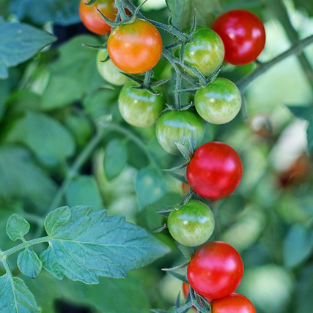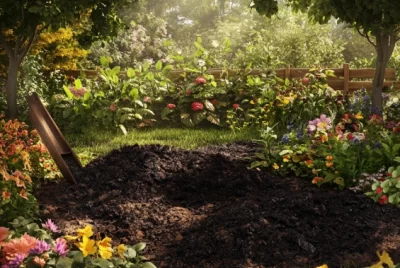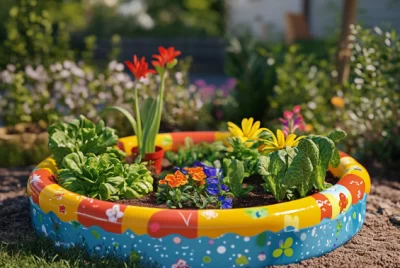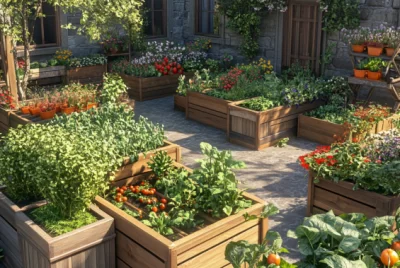Hydroponic Cherry Tomatoes: A Delicious and Efficient Way to Grow Your Own
Hydroponic cherry tomatoes might be the perfect solution for you if you are a tomato lover with limited space for traditional gardening. Or perhaps you’re looking for a fascinating gardening project that can yield delicious results. Hydroponic cherry tomatoes offer a unique and efficient way to grow these juicy, bite-sized fruits, even if you have limited outdoor space or unfavorable soil conditions.
In this article, we’ll explore the world of hydroponic cherry tomatoes, from understanding the basics of hydroponics to mastering the art of growing these delightful fruits in a soil-less environment. Whether you’re an experienced gardener looking for a new challenge or a beginner eager to embark on your gardening journey, hydroponic cherry tomatoes can be a rewarding and enjoyable project.
Getting Started with Hydroponics
What is hydroponics?
To begin our journey into the world of hydroponic cherry tomatoes, let’s first understand what hydroponics is all about. Hydroponics is a method of growing plants without soil, where the plant roots receive all the necessary nutrients directly from a water-based solution. This innovative approach to gardening allows you to control and optimize growing conditions to maximize plant growth and yield.
Advantages of hydroponic farming
Now, you might wonder why anyone would choose hydroponics over traditional soil-based gardening. Well, there are several compelling advantages to this method:
Space Efficiency:
Hydroponics allows you to grow plants in a smaller space compared to traditional gardening. It’s perfect for urban dwellers or anyone with limited garden space.
Precise Nutrient Control:
With hydroponics, you have precise control over the nutrient levels your plants receive. This means healthier, more vigorous growth and potentially higher yields.
Water Conservation:
Hydroponic systems typically use less water than soil-based methods, making it a more environmentally friendly choice.
Fewer Pests and Weeds:
Without soil, there are fewer opportunities for pests and weeds to disrupt your plants, reducing the need for pesticides and herbicides.
Faster Growth:
Hydroponically grown plants often mature faster than their soil-grown counterparts, allowing for quicker harvests.
Choosing varieties for hydroponic cherry tomatoes
Now that we’ve highlighted the benefits of hydroponic farming, you might be wondering why we’re specifically focusing on cherry tomatoes. Cherry tomatoes are an excellent choice for hydroponics for several reasons:
Compact Growth:
Cherry tomato plants tend to be more compact compared to their full-sized counterparts, making them well-suited for smaller hydroponic systems.
High Yield Potential:
Despite their size, cherry tomato plants can produce a surprisingly abundant crop, ensuring you get the most out of your hydroponic setup.
Flavorful Rewards:
Cherry tomatoes are known for their sweet, vibrant flavor, making them a delightful addition to salads, snacks, and dishes.
As we delve deeper into this article, you’ll discover how to select the right cherry tomato varieties, set up your hydroponic system, and provide the optimal conditions for these delicious little gems to thrive. Whether you’re a hydroponic enthusiast or a beginner, get ready to embark on a journey into the world of hydroponic cherry tomatoes, where the rewards are as delightful as the fruits themselves.
Growing Conditions
Now that you understand the advantages of hydroponic farming and why cherry tomatoes are an excellent choice for this method, let’s dive into the essential growing conditions you need to provide for your hydroponic cherry tomatoes to thrive.
Ideal Temperature and Humidity
Maintaining the right temperature and humidity levels is crucial for the success of your hydroponic cherry tomato garden. Cherry tomatoes prefer a warm and humid environment. Aim to keep the temperature between 70°F to 75°F (21°C to 24°C) during the day and slightly cooler at night. Use a thermometer and humidity meter to monitor these conditions, and consider using heaters or fans to adjust them as needed.
Light Requirements for Hydroponic Cherry Tomatoes
Light is one of the most critical factors in hydroponic cherry tomato cultivation. Since you won’t rely on natural sunlight, you’ll need to provide artificial light sources such as LED or high-intensity discharge (HID) grow lights. These lights should be placed at the right distance from your plants to ensure they receive the appropriate amount of light.
A general rule of thumb is to provide your cherry tomato plants with 14 to 16 hours of light per day. You can use a timer to automate this process and mimic natural daylight cycles. Ensure the light spectrum includes both blue and red wavelengths, as these are essential for different stages of plant growth.
Nutrient Solutions and pH Levels
Hydroponic cherry tomatoes rely on nutrient solutions to thrive. You’ll need to mix a balanced nutrient solution specifically formulated for tomatoes. These solutions typically include essential elements like nitrogen, phosphorus, potassium, calcium, and magnesium.
Maintaining the correct pH level is crucial for nutrient absorption by your plants. Aim for a pH level between 5.5 and 6.5. You can regularly check and adjust the pH using a pH meter and pH up or down solutions. This ensures that your cherry tomato plants can absorb all the nutrients they need for healthy growth.
Proper Aeration and Oxygenation
In a hydroponic system, oxygen is as vital as nutrients. Cherry tomato roots need oxygen to function correctly, so it’s essential to maintain proper aeration and oxygenation within your hydroponic setup. This is typically achieved through the use of air stones, air pumps, and diffusers that introduce oxygen into the nutrient solution.
Additionally, ensure that your hydroponic system has adequate drainage to prevent waterlogging, which can deprive the roots of oxygen. Proper aeration and oxygenation will promote healthy root development and overall plant vigor.
By carefully managing these growing conditions, you can create the perfect environment for your hydroponic cherry tomatoes to flourish. In the next section, we’ll explore the process of planting and transplanting your cherry tomato seedlings into the hydroponic system, setting the stage for a successful harvest.
Planting and Transplanting
Starting Tomato Seeds
To kickstart your hydroponic cherry tomato journey, you’ll need to begin with seeds. Choose high-quality cherry tomato seeds from a reputable source. You can start them in seedling trays filled with a soil-less growing medium like coconut coir or rockwool cubes. Keep the growing medium moist and provide adequate light for germination.
Transplanting Seedlings into Hydroponic System
Once your seedlings have developed a couple of true leaves, it’s time to transplant them into your hydroponic system. Gently remove the seedlings from their trays, being careful not to damage the delicate roots. Place them into the growing cups or containers in your hydroponic setup, ensuring they are securely supported.
Caring for Young Plants
During the early stages of growth, your cherry tomato plants require attentive care. Ensure they receive the right amount of light, maintain the correct nutrient solution, and monitor temperature and humidity. You may need to adjust the height of your grow lights as your plants grow taller to prevent them from getting too close and burning.
Nutrient Management
Understanding Nutrient Deficiencies
As your cherry tomato plants grow, it’s essential to keep an eye out for nutrient deficiencies. Common signs include yellowing leaves, stunted growth, and poor fruit development. Understanding these symptoms will allow you to take prompt action and adjust your nutrient solution accordingly.
Preparing and Maintaining Nutrient Solutions
Regularly prepare fresh nutrient solutions according to the manufacturer’s instructions. Be consistent in monitoring nutrient levels and pH, adjusting them as needed. This consistency will help ensure your cherry tomatoes receive the right nutrients at all times.
Adjusting Nutrient Levels
Different growth stages require varying nutrient levels. For instance, during the flowering and fruiting stage, your cherry tomatoes will need more phosphorus and potassium. Adjust your nutrient solution to meet these changing requirements and optimize fruit production.
Water Management
Importance of Water Quality
The quality of water you use in your hydroponic system matters. Ideally, use purified or filtered water to prevent the buildup of contaminants that can harm your plants. Tap water, if heavily chlorinated, can be detrimental, so consider using a dechlorinator or a water source with minimal chlorine.
Monitoring Water Levels and Circulation
Maintain the proper water levels in your hydroponic system to ensure that the roots remain submerged but not waterlogged. Consistent circulation of the nutrient solution is crucial to deliver oxygen and nutrients to the roots effectively.
Preventing Common Water-Related Issues
Be vigilant for issues such as root rot and algae growth. Proper sanitation and preventive measures will help keep your hydroponic cherry tomatoes healthy and free from water-related problems.
Conclusion
In this article, we’ve embarked on a journey into the fascinating world of hydroponic cherry tomatoes. We began by understanding the benefits of hydroponics and why cherry tomatoes are an excellent choice for this method. We explored the essential growing conditions, including temperature, light, nutrient solutions, and proper aeration.
We then delved into the process of planting and transplanting cherry tomato seedlings into your hydroponic system, followed by the importance of nutrient management and water quality. By maintaining these key aspects, you can create an ideal environment for your cherry tomato plants to thrive.
Whether you’re a seasoned gardener looking for a new challenge or a beginner excited to explore hydroponics, growing cherry tomatoes hydroponically offers a rewarding and enjoyable experience. So, roll up your sleeves, set up your hydroponic system, and get ready to enjoy the sweet, homegrown flavor of your very own hydroponic cherry tomatoes. Happy gardening!
Frequently Asked Questions (FAQs) About Hydroponic Cherry Tomatoes
1. Can I grow hydroponic cherry tomatoes indoors?
Yes, you can! Hydroponic cherry tomatoes are well-suited for indoor cultivation. With the right lighting, temperature control, and a compact hydroponic system, you can enjoy fresh cherry tomatoes year-round, even in limited indoor spaces.
2. What is the best cherry tomato variety for hydroponics?
Cherry tomato varieties such as “Tiny Tim,” “Red Robin,” and “Micro Tom” are ideal for hydroponics. These compact varieties thrive in smaller hydroponic setups, making them perfect for indoor or limited-space gardening.
3. Do hydroponic cherry tomatoes taste different from soil-grown ones?
Hydroponic cherry tomatoes often have a more concentrated and sweeter flavor compared to their soil-grown counterparts. This intensified taste is a result of precise nutrient control and optimal growing conditions in hydroponic systems.
4. How often should I change the nutrient solution in my hydroponic cherry tomatoes system?
You should change the nutrient solution every 1 to 2 weeks. Regularly refreshing the solution ensures your cherry tomato plants receive a consistent and balanced supply of essential nutrients for healthy growth.
5. Can I reuse the growing medium in my hydroponic system?
Yes, you can reuse the growing medium with proper sterilization between crops. Cleaning and sterilizing the medium helps prevent the buildup of harmful pathogens and ensures a healthy environment for your next batch of hydroponic cherry tomatoes.




